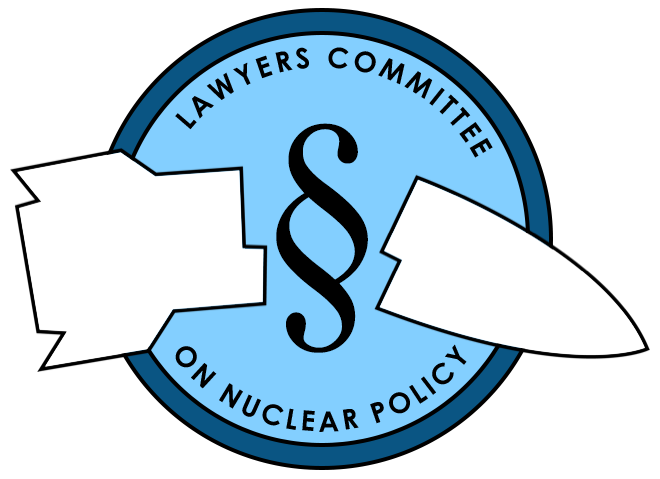As Tech Develops, So Must Multilateral Nuclear Arms Control
Ariana Smith, Executive Director | Guy Quinlan, President
“If the territorial integrity of our country is threatened, we will certainly use all the means at our disposal to protect Russia and our people,” President Putin said in a televised address on September 21, issuing the latest in a series of unacceptable and illegal nuclear threats since Russia’s invasion of Ukraine in February of this year.
The rising risk of conflict between nuclear weapon-possessing states turning nuclear and thus annihilative is undeniable today, in Ukraine and potentially in Taiwan and elsewhere. What deserves more attention is that this risk is exacerbated by emerging technology. However difficult in present circumstances, now more than ever nuclear powers must pursue effective arms control.
In 2015, a panel of retired military experts, chaired by a former Vice Chairman of the Joint Chiefs of Staff, warned that developments in technology were shortening warning and decision times, thus increasing the risk of “catastrophic” human error. In the intervening seven years, numerous scientists and arms control experts have reported that developments in such fields as cyber warfare, artificial intelligence, satellite and other sensing techniques, and hypersonic missiles are sharply increasing the danger. A commentary in Arms Control Today on the increasing use of artificial intelligence in nuclear command and control systems notes that, while providing some efficiencies, it also “could raise the chance of nuclear use in the most dangerous manner possible: subtly and without warning.”
These developments are entering a new and even more critical phase. In a recent article, former Undersecretary of State for Arms Control Rose Gottemoeller notes that “with advances in sensing technology, states may soon be able to track and target their adversaries’ nuclear missiles… Advances in big data analysis and quantum computing may enable real time tracking and targeting of mobile nuclear missiles and in the future even submarines.” She notes that with such “real time tracking and targeting...even the stealthiest or most well protected nuclear weapons will become vulnerable in the future.”
These are grave developments. Ms. Gottemoeller notes that “confidence in the survivability of second strike capabilities...has been a strong factor in maintaining the stability [sic!] of nuclear deterrence.” Clearly “stability” here is a relative term at best, since the mutual deterrence system has brought us several times within minutes of accidental nuclear war. However, it is certainly true that increases in the perceived vulnerability of second strike capabilities can only make the danger even greater.
The use of nuclear weapons—whether intentionally, by accident, or miscalculation—could immediately kill hundreds of millions of people and would irreversibly poison the Earth for many generations to come. Two recent studies calculate the devastating effects of the resulting “nuclear winter” from even a small-scale nuclear war. This would decimate crops, leading to famine, and further destroy marine life and cause massive expansion of sea ice, ushering in a “Nuclear Little Ice Age” from which it would take decades to recover.
The only sure way to eliminate the risk of mass catastrophe via nuclear weapons is to abolish them, with nuclear weapon-possessing states committing to measurable and time-bound steps to fully disarm. In the absence of such steps or even commitments to take such steps, effective arms control of existing arsenals is essential.
The United States must resume negotiations with Russia and China on arms control and strategic stability, and it is imperative that these should include expert discussions on technological issues. One positive development from the recent 10th Nuclear Non-Proliferation Treaty Review Conference, which concluded August 26, was that the US and Russia agreed to “full implementation of the New START Treaty and to pursue negotiations in good faith on a successor framework to New START before its expiration in 2026, in order to achieve deeper, irreversible, and verifiable reductions in their nuclear arsenals.” Even though a final outcome document was not achieved, as Russia blocked consensus, the two largest nuclear weapon states did not object to this provision. Next, Russia and the US need to follow-through on this commitment and further extend it to multilateral arms control negotiations.
At least five times in the decades since the Cuban missile crisis we have come within minutes of accidental nuclear war, as examined in The Button: The New Nuclear Arms Race and Presidential Power from Truman to Trump (pp. 59-65) by former Secretary of Defense William Perry and Ploughshares Fund Director Tom Collina. In each instance it was because human or machine error had caused one side to believe it was already under attack. New developments in technology are increasing the danger of such incidents at a rapid pace, and time is not on our side.
The existence of actual or potential serious conflicts in Ukraine, the Taiwan Strait, and elsewhere should not delay the resumption of negotiations. A world free of great power conflicts will not exist in the foreseeable future, and such conflicts only accentuate the need for prompt action. The time window for successful arms control negotiations may be narrowing rapidly, and we must act now.
PDF here.
